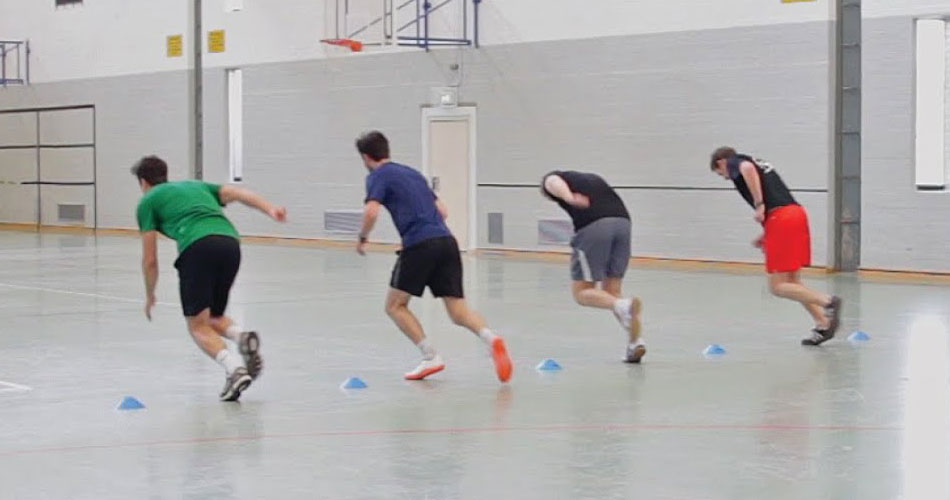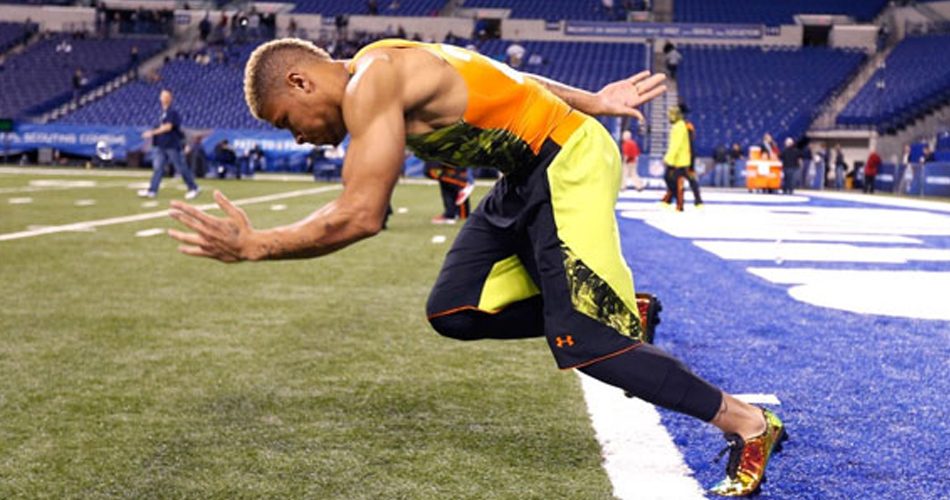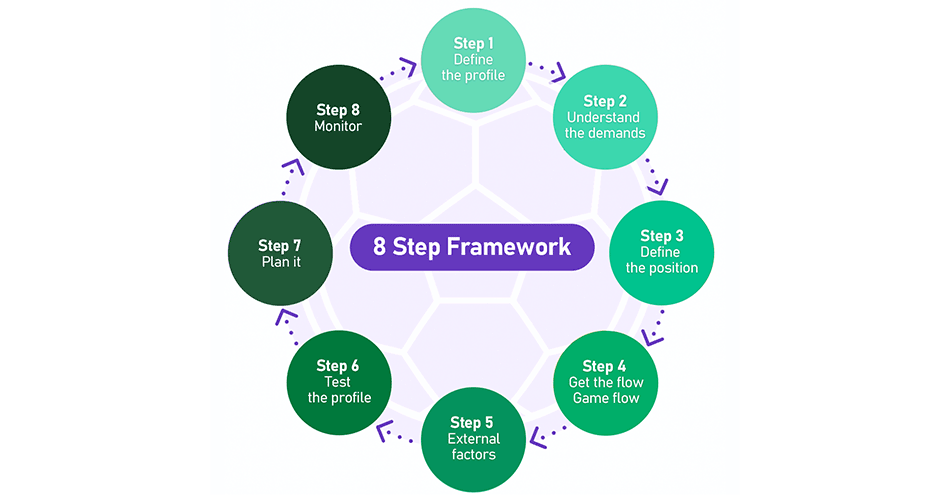Endurance in Basketball
When it comes to endurance in team sports, basketball somehow seems to be neglected in the scientific literature in comparison to soccer. There is a consensus about what the demands are and how one should prepare for soccer, but there seems to be no such thing for basketball. One possible explanation is that GPS tracking in soccer has enabled coaches to research the game better and quantify things. The nature of the game and an indoor setting make basketball more suited to accelerometry which is not as straightforward to analyze. At the moment of writing, only three or four teams in the Euroleague are using accelerometry.
Let’s briefly analyze the game: four 10 (or 12min) quarters, with a 15min break at halftime, frequent substitutions and plenty of breaks during the game for violations, timeouts etc. Total distance traveled is somewhere between 1400-1600m per quarter which means that a player playing all four quarters without substitution would run between 5600-6400m total per game. >75% of the game is at lower speeds (walking makes up around 40% of that), 15-20% at moderate speed and 5% at high and highest speed. On average a basketball player performs 0.2 sprints per minute (this number can be misleading as the actions performed during that small percentage of actions usually determine the outcome). Around 20% of the time is spent in defensive shuffling and sideways running at various speeds. A basketball player changes his movement pattern almost 1000 per game, which means every 2s on average. During play, the heart rate goes up and down constantly between 80 and 95% max HR with the average being around 88% of max HR. During breaks and periods spent on the bench, the heart rate drops to almost resting levels which is another factor that prevents blood lactate from accumulating too much (peak lactate on average 5-7mM as opposed to >10mM for soccer).
Accelerometry measurements reveal that an average basketball player experience on average eight “impacts” (jumps, collisions, screens, boxing out) per minute of playing time, making basketball very similar in this regard to rugby.
Probably the best test to measure player readiness to cover the “up and down the court” aspect of the game is the Yoyo Intermittent Test Level 2 (YOYOIRTL2). Just as a reminder, in this test the player runs 20m and back and then has a 10s break. The pace at the 20m mark, finish line and breaks are dictated by beeps. The pace gets progressively faster and the test is terminated when the player can’t keep up any more. It is a performance test but it is not a VO2 max test. Speed plays a huge factor here. Let me explain: Player 1 is an athletic guard has a 20m sprint time of 2.8s and let’s say he runs down and back in 6.1s (some time is lost decelerating and reaccelerating at the turn) and Player 2 is a slower big man who runs the 20m in 3.1s and runs 20m down and back in 7s. When running the YOYOIRTL2 they will be running at the same speed but very different percentages of their respective maximums. Now have a look at the table:
| YOYO IRTL2 stage | stage speed (m/s) | % of max Player 1 | Subjective feeling | % of max Player 2 | Subjective feeling |
|---|---|---|---|---|---|
| 1 | 3.61 | 55 | I CAN’T RUN THIS SLOW | 63 | |
| 2 | 4.17 | 63.6 | 73 | IT SURE DID START FAST | |
| 3 | 4.44 | 67 | 77.8 | ||
| 4 | 4.44 | 67 | 77.8 | ||
| 5 | 4.58 | 70 | OH, OK | 80 | WHOA!!! |
| 6 | 4.58 | 70 | 80 | ||
| 7 | 4.58 | 70 | 80 | ||
| 8 | 4.72 | 72 | 82.6 | ||
| 9 | 4.72 | 72 | 82.6 | WHAT THE HELL!? | |
| 10 | 4.72 | 72 | 82.6 | ||
| 11 | 4.72 | 72 | 82.6 | I DON’T WANT TO EMABRASS MYSELF | |
| 12 | 4.86 | 74 | 85 | ||
| 13 | 4.86 | 74 | 85 | JUST ONE MORE | |
| 14 | 4.86 | 74 | THIS IS NOT SUCH AN EASY TEST | 85 | IM OUT |
| 15 | 4.86 | 74 | 85 | ||
| 16 | 4.86 | 74 | 85 | ||
| 17 | 4.86 | 74 | 85 | ||
| 18 | 4.86 | 74 | 85 | ||
| 19 | 4.86 | 74 | 85 | ||
| 20 | 5 | 76 | GOTTA TRY TO HANG IN THERE | 87.5 | |
| 21 | 5 | 76 | 87.5 | ||
| 22 | 5 | 76 | 87.5 | ||
| 23 | 5 | 76 | 87.5 | ||
| 24 | 5 | 76 | 87.5 | ||
| 25 | 5 | 76 | I’M OUT | 87.5 | |
| 26 | 5 | 76 | 87.5 |
Notice how soon the slower player hits >80% of his max speed, while the fast player would stay under 80% all the way until stage 36. It now becomes clear how a huge aerobic engine is not going to help the unfortunate soul that runs a 40m shuttle in 7s (what could help is a good strength/power/speed program that can perhaps turn that 7s into 6.5s). The first time I saw would be NBA players getting tested pre-draft, the thing that struck me was how freaky fast all the big men were. In the ever faster and positionless NBA game of today, good speed is becoming an absolute prerequisite even for bigs.
Nobody was ever selected to play professional basketball because of a high VO2 max (for those asking themselves why I then consider the YOYOIRT2 relevant, keep in mind that it is considered a poor VO2max test). As a fun fact, it might be worth mentioning that the best basketball players would not make it past level 26 and some soccer midfielders can run above level 40!
So if soccer players are so good in a test that’s relevant, wouldn’t that mean that they would make super prepared basketball players if they chose to play, being able to play two back-to-back games with the full-court press? Well…probably not.
While recently visiting a Premier League soccer team, I was chatting over coffee with the Head Coach, who was a world-class midfielder in his days (those guys cover the greatest distances) when he mentioned that the hardest game he had ever played was 3 on 3 basketball. I looked at him in shock as 3 on 3 is something a basketball player can play in street clothes without breaking too much of a sweat, but this goes to prove that running has its limits in preparing for basketball. It is simply a different game.
Also, as a personal anecdote, I once trained a player who had to train to pass a 1500m running test at the university concurrently with our basketball practices. Despite bringing his time down by time down by a whopping 20s over the course of a month, he reported no improvements in basketball endurance (also said that he felt that he had lost some power).
So, now that we have determined that speed influences endurance and that just being ready to run is not enough, the question are there any other components that get overlooked?
Here are some missing pieces in my opinion:
1. Elastic strength
Plyometric training has been shown to improve the running economy, especially at higher velocities. For this reason alone, it is worthwhile to test and develop elastic qualities in the off-season and maintain them in season. There is evidence that unilateral, horizontal plyometrics might offer an advantage compared to the vertical bilateral variety when it comes to increasing running economy. Lateral plyometrics should be included to help with lateral movements and changes of direction. Both horizontal and lateral plyometrics make a difference here since force production is proven to be direction and plane specific.
During my time with the Chicago Bulls, we discussed how back in the days Jordan and Pippen could play big minutes a night in night out even though they did not have high VO2 maxes. Their movement efficiency was great. They had very long Achille’s tendons compared to their calves. This kind of build is very favorable for elastic strength because the tendon recoil can augment muscular work to a greater degree.
Of course, tendon insertions are determined by genetics and elastic abilities are somewhat genetically determined (if we look at the highest levels of human performance) but still, they are very trainable. Especially big men can benefit from this kind of training as their starting level is usually very low. Mind you, plyometric work can be hazardous for very tall and heavy athletes if done at high intensities, ankle jumps, hops and horizontal and lateral bonds should enough to get the job done.
2. Overall work capacity
A basketball player’s overall work capacity is a result of not only work performed aimed at building running conditioning but also a measure of total work (specific and non-specific) performed during the off season and season. In other words, everything counts. The overall volume of speed work counts, the volume of strength weights counts, core work counts.
I must mention that transfer of training is a concept whose many aspects have not been scientifically studied. How does one measure the effect of the combined annual volume of speed, power, strength, core work on endurance in a certain game? Especially when, as mentioned above, the endurance was not easily measured to begin with. Maybe the best way of explaining it would be to use the term coined by the great coach Charlie Francis “organism strength”. We know that there is a transference effect between certain exercises e.g. power snatch increases vertical jump by a certain amount. This is almost self-evident because it is obvious that the musculature involved, sequencing and velocities are similar between the two movements. But from real life, we also know that an increase in performance in one exercise can enhance performance in a seemingly unrelated exercise. For example, an improved bench press will have a certain amount of transfer to sprinting even though the maximum strength in the involved muscle groups has nothing to do with the movement of the arms in sprinting. So how does transfer of training relate to basketball endurance? Simply, a body conditioned to a high workload via GPP means will have a higher potential to tolerate bigger specific loads later during the SPP, not to mention break down less and stay fresh for longer during the season.
A well-structured GPP has three things. One, work directed at improving relevant qualities that will make the athlete a better basketball player. Two, the work is vertically integrated, which means all the qualities are present all the time just in varying volumes. And three, there is nonspecific work present, aimed at organism strength development. For example, I saw strongman circuits (which would have been considered sacrilegious 10 years ago) put to very good use when I visited the University of Wisconsin that made me a fan ever since. The overall volume of work in the GPP should be kept high while taking care not to overstress the CNS.
Why am I making a such big deal out of this? Because we are moving towards a trend where in the off-season recovery and regeneration are becoming everything. “My body needs to rest for at least a month” is a very common phrase these days (this month is often followed by another month of not doing much) and I see too many coaches compromising in these situations, watering down the training to cater to these new conditions. Players should know that changing the direction of training away from competitive basketball will help them regenerate as well as make them better.
3. Coaching and playing style
The game itself is the best specific conditioning method. Coaching style influences the type of work capacity developed. This simply happens as a result of team training and games. I have worked on teams for coaches that had hugely different coaching styles e.g. one ran fast breaks and quick transition offense all day long and another thrived on the less is more approach with short duration practices, half court offenses, with a lot of stopping for giving instructions. In the first scenario, my job was to convince the head coach that extra conditioning would be counterproductive and to taper before games and in the latter that we needed to do extra conditioning to avoid detraining. Heart rate monitoring and RPE are still valid here but the future is probably in accelerometry and non-GPS indoor movement tracking systems.
Regardless of the style of play, the team should be capable of handling high loads. The strength and conditioning coach’s goal is to monitor training load and react. Planning is better than reacting, but I have yet to see a team that has a year-round loading plan and actually sticks to it.
4. Player development drills
The difference in playing times between players is one of the hallmarks of basketball hence the inevitable need to work some players differently than others during the season. Minutes played and practice loads must be analyzed and individual practice plans developed that fits the overall team schedule. Individual basketball drills are similar in movements to the game itself so they provide a very specific training stimulus and also an opportunity to control many variables. The problem that often arises here is that basketball coaches see individual work as an opportunity to turn it into a conditioning drill with a breakdown in technique and energetics completely outside the realm of basketball. Trust and cooperation between the basketball and the performance staff are important here. I prefer the approach where the drills involving the ball are technique, speed, power and agility oriented with mostly complete recoveries and conditioning is done in an interval fashion separately. Some familiar and simple drills can and should be done in an endurance fashion but this should be heart rate monitored as I have seen basketball coaches turn these into lactate tolerance drills too often.











Responses